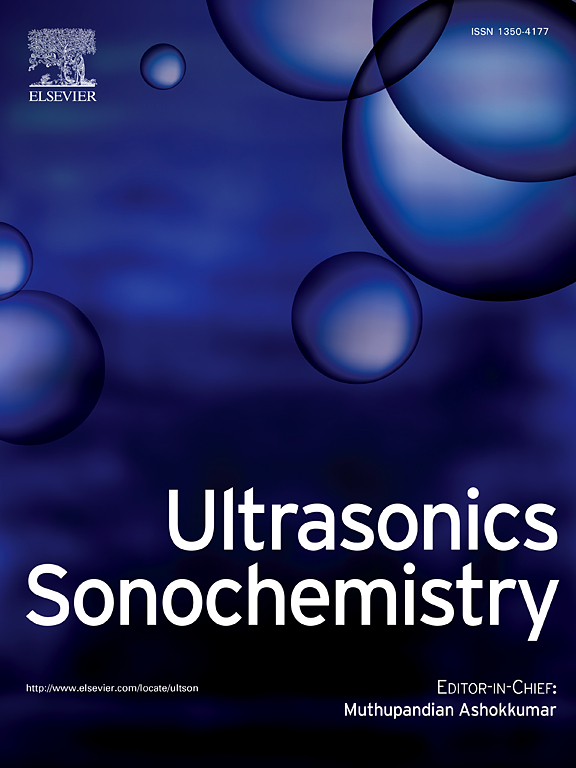Process, dynamics and bioeffects of acoustic droplet vaporization induced by dual-frequency focused ultrasound
IF 8.7
1区 化学
Q1 ACOUSTICS
引用次数: 0
Abstract
Acoustic droplet vaporization (ADV) plays a crucial role in ultrasound-related biomedical applications. While previous models have examined the stages of nucleation, growth, and oscillation in isolation, which may limit their ability to fully describe the entire ADV process. To address this, our study developed an integrated model that unifies these three stages of ADV, stimulated by a continuous nonlinear dual-frequency ultrasound wave. Using this integrated model, we investigated the influence of nonlinear dual-frequency ultrasound parameters on ADV dynamics and bioeffects by incorporating tissue viscoelasticity through parametric studies. Our results demonstrated that the proposed model accurately captured the entire ADV process, ensuring continuous vapor bubble formation and evolution throughout the phase transition process. Moreover, the applied unified theory for bubble dynamics can simulate intense bubble collapse with high Mach Number as a result of the nonlinear effects of dual-frequency ultrasound. In addition, cavitation-associated mechanical and thermal damage appeared to be more strongly correlated with rapid bubble collapse than with maximum bubble size. Our research also revealed that the mechanical and thermal effects could be regulated independently to some extent by adjusting dual-frequency ultrasound parameters, as they presented differing sensitivities to frequency and acoustic power. Importantly, dual-frequency combinations such as 1.5 MHz + 3 MHz (fundamental and second harmonic), which exhibit a higher Degree of Nonlinearity (DoN) can extend bubble lifespan, offering a potential pathway to the efficacy of ultrasound treatments.求助全文
约1分钟内获得全文
求助全文
来源期刊

Ultrasonics Sonochemistry
化学-化学综合
CiteScore
15.80
自引率
11.90%
发文量
361
审稿时长
59 days
期刊介绍:
Ultrasonics Sonochemistry stands as a premier international journal dedicated to the publication of high-quality research articles primarily focusing on chemical reactions and reactors induced by ultrasonic waves, known as sonochemistry. Beyond chemical reactions, the journal also welcomes contributions related to cavitation-induced events and processing, including sonoluminescence, and the transformation of materials on chemical, physical, and biological levels.
Since its inception in 1994, Ultrasonics Sonochemistry has consistently maintained a top ranking in the "Acoustics" category, reflecting its esteemed reputation in the field. The journal publishes exceptional papers covering various areas of ultrasonics and sonochemistry. Its contributions are highly regarded by both academia and industry stakeholders, demonstrating its relevance and impact in advancing research and innovation.
 求助内容:
求助内容: 应助结果提醒方式:
应助结果提醒方式:


